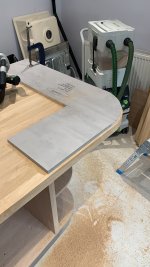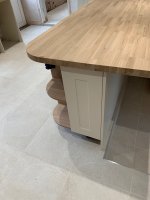Tim Brennan
Member
- Joined
- Jul 28, 2013
- Messages
- 145
About 10 years ago I bought a "Mobile dust extractor Cleantex 240v CTL26 E" and it has served me very well.
I need to cut a few circles out of some 18mm ply and I have been using a OF1400.
I normally do a my occasional woodwork outside, but since we recently got a large garden office I am am thinking of using that - especially with the bad UK weather at the moment. The problem is I am not sure if I will end up breathing in the dust, or getting everything covered in dust.
So my question is can I upgrade my CTL26 to be HEPA standard? Do I need to do that? or is the one I have ok the way it is?
I need to cut a few circles out of some 18mm ply and I have been using a OF1400.
I normally do a my occasional woodwork outside, but since we recently got a large garden office I am am thinking of using that - especially with the bad UK weather at the moment. The problem is I am not sure if I will end up breathing in the dust, or getting everything covered in dust.
So my question is can I upgrade my CTL26 to be HEPA standard? Do I need to do that? or is the one I have ok the way it is?


